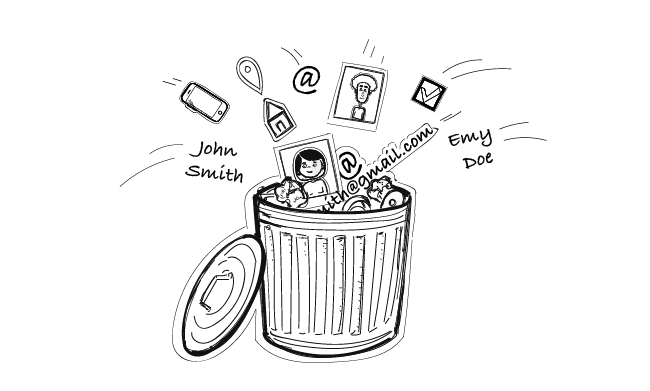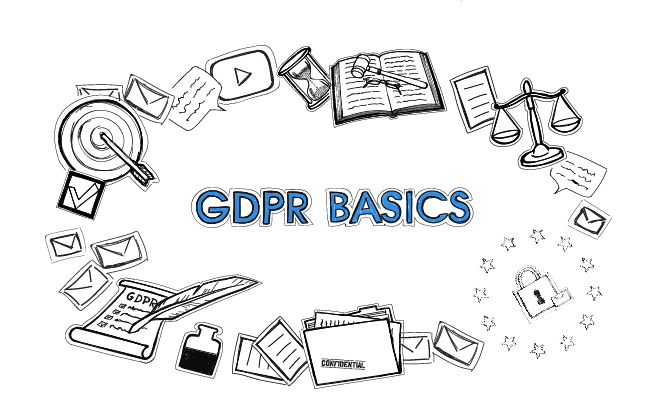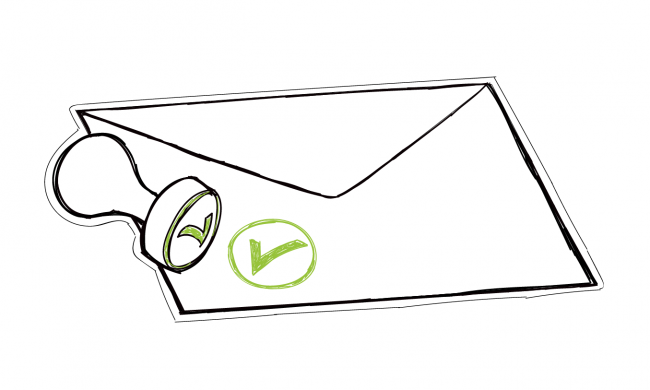As with any form of business communication, there are a couple of rules you need to follow to make your email outreach professional. I took some time to research the requirements for a proper email outreach in countries, such as Canada, China, Australia, New Zealand, not to mention the United States (with recently updated California law), Norway, Germany, Switzerland, and of course, the rest of the countries that are a part of the European Union (read about GDPR here).
That may seem like a lot to handle in one article, but I distilled down all I’ve found into a basic set of requirements for you to keep in mind next time you write a cold email.
Why we need to think about it?
Looking at ways countries regulate email sending, there’s a strong tendency to protect the personal information of their citizens. As you may remember, the EU started to talk about increasing data protection, because their citizens voiced concerns about their privacy.
Watch a fragment of our webinar where we explain why was GDPR created >>
Look at cold email outreach. We use cold email to contact companies we haven’t contacted before. We don’t know them in person. We haven’t interacted with them before. We just assume they would be a good customer, based on some assumptions we’ve made on who our ICP is. We don’t have any bad intentions. We just want to talk to them.
Now, let’s switch perspective. I’m sure you’ve gotten a few cold emails in your career. And one of them might have seemed ill-targeted for you. You weren’t quite sure why you got it. You didn’t feel much like responding. So you just left the sender hanging.
What if I told you that by respecting the basic requirements of sending cold emails, you could actually have a winning cold email strategy?
Here is what you should pay attention to in order to design such a strategy.
Basic requirements for sending a cold email campaign
There are 6 basic requirements I discovered by looking at policies around the world.
Rule #1: Give a way out from your emails
According to the CAN-SPAM Act that is binding in the USA, you’re not obliged to collect consent, but you should give an option to opt out from getting your emails. The same goes for GDPR. When you send a cold email to the EU member state, you need to give a clear way to opt out. In Canada, Germany, Norway, Switzerland, and Australia, an unsubscribe should also be included in your message.
What does it mean?
When writing an email copy, let the message receivers know how they can unsubscribe from your email sequence. Whether you put it in a form of a link or put a disclaimer inside the email, you need to do this to show that you are trustworthy and knowledgeable about the law.
This Woodpecker blog entry shows you how to do it
Should I Give My Cold Email Addressee a Way to Opt Out? >>
Rule #2: Make it easy to identify you
Since you reach out to a stranger, introduce yourself. That should be a no-brainer even without the legislation that stands behind it. Your prospects should identify you — at least, that’s how the China lawmakers see it. You need to let your prospect know who you are when you send email to Switzerland, Norway, New Zealand, Australia, Canada, and the USA, too. Basically, it’s a given in the most regulations I’ve seen.
How to go about it?
In 6 steps to perfecting cold email copy, you’ve read that your signature is an essential cold email part that tells your addressee who you are. Use it to comply with the law.
Put all the necessary pieces of information there that help a prospect to identify you. So your name, company name, and much more are the bits of info you should consider adding. Read our guide to a signature to learn how to do it.
What Should I Put In My Signature? >>
Some legislations define even more technical aspects of email sending when it comes to the sender identification. The headers of the commercial email, which indicate the source, destination, and routing information, must not contain materially false or materially misleading information.
Rule #3: Contact Credentials
You might be obliged to put a physical address of your company in the cold email. Here’s a list of countries that require you to include the physical address:
- Canada
- Germany
- Norway
- Switzerland
- Australia
- New Zealand
- all EU member states
Rule #4: You need to have a valid reason for contacting people
You can only contact people when you have a strong reason to reach out to them. One of such reasons is that there’s a legal ground for it — your business statute is clearly connected to theirs. That what is advocated by GDPR in a form of legitimate interest or consent collection.
Read the full blog post about GDPR here:
General Data Protection Regulation Practical Guide for Email Senders >>
The other regulations require consent. Some of the regulations I dug out stated that you need consent before you can email anyone. Even though cold email isn’t a promotional offer. Collecting prospect’s consent is obligatory in Canada, China, and Norway. When it comes to Germany – you need double consent.
How to collect consent for email outreach?
A nice strategy to contact people in those countries may be using inbound + outbound strategy. For example, creating a webinar and then firing an outreach campaign once it ends. Of course, you would contact only the people who gave you their consent for being contacted.
We’ve tried mixing inbound with outbound. Here’s how we went about it:
- How We Found our Prospects on Quora: Vol. 1 >>
- How We Asked Quora People to Attend Our Webinar: Vol. 2 >>
Rule #5: Inform about a message type
Sometimes you’re expected to inform prospects about the type of your message. You need to be clear about the nature of your message, so you and the recipient are on the same page. That’s understandable. If your message is for commercial purposes, you’re required to put that in your email copy.
All the regulations asked for it except from the US CAN-SPAM Act. Just to be clear you need to inform your addressee about the type of your message when you send your emails to companies located in:
- China
- Canada
- Australia
- New Zealand
- Germany
- Switzerland
- Norway
- …and the rest of the EU member states
Rule #6: Don’t go for clickbait in your subject line
Subject lines are like keys that open your messages. They are the very things that catch your prospect attention and make them click on your email. You may feel tempted to put something attention-grabbing in your subject line to make it irresistible to open.
Beware of clickbait, though. It may get you into trouble in the USA and Germany. If you use a subject line that doesn’t correspond to the rest of your email, you may get penalized. Same goes for the “From:” line.
Where can I learn more about the law?
Here you have basic findings that I found the most useful. However, if you wish to go deeper into law, check out these resources to get a comprehensive view on that:
- CAN-SPAM Act
- Canadian Anti-Spam Legislation (CASL) of 2014
- Australian SPAM Act of 2003
- New Zealand – Unsolicited Electronic Messages Act of 2007
What can I get from all this?
I have the following piece of advice for you. Next time you sit to prepare your cold email campaign, make room for the rules above. This may seem like another uninteresting thing to have on your mind, but trust me, it’s better to be safe than sorry. And if you look on the headers, they don’t seem to be too much.
If you’re going to target a new country for you, and you don’t know their regulations, it’s better to google that country’s data protection law.
We covered GDPR and California privacy act for you. And above you can find links to other regulations.
Hope it was helpful.
READ ALSO

GDPR for Product Owners and Developers
GDPR has been a big boom for us all. While browsing the Internet, we can easily find a lot of info about what GDPR is, who and what it applies to, and what requirements we should meet as companies in order to comply with the regulation. But for many of us in the Internet industry, there’s still the question of HOW we should actually apply it to our product.

GDPR After Brexit: How It May Affect Cold Email?
There's a lot of uncertainty around the United Kingdom leaving the European Union. Since some of you target the UK, I think you wonder what will happen there in terms of GDPR. Will GDPR be still relevant after Brexit? Let's see.

What Did We Talk About in our Webinar about GDPR Basics?
Not so long ago, I shared with you how our outbound sales team searches for prospects on Quora and what they write in an email. Today, I'd like to present you one of our webinars, and at the same time, teach you more about GDPR.

